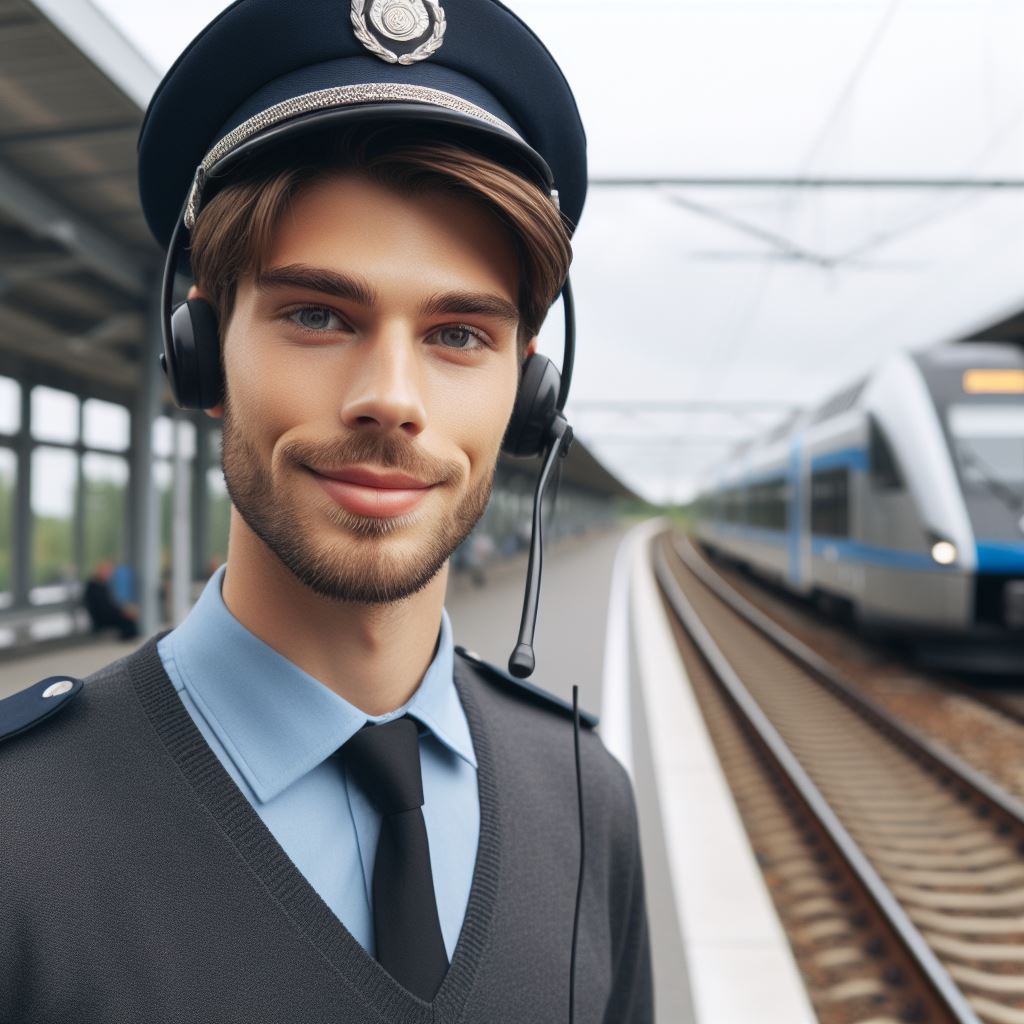Introduction
Navigating New Zealand’s transport system can be challenging, especially for those unfamiliar with the routes and schedules.
This section focuses on providing insights into the world of bus drivers, who play a crucial role in ensuring smooth and efficient transportation for passengers across the country.
A. Introducing the topic of navigating NZ’s transport
- Bus drivers are the backbone of New Zealand’s public transport system.
- They navigate through busy streets and rural routes to get passengers to their destinations.
- Understanding their role can help passengers appreciate the challenges they face daily.
- This section explores the experiences and insights of bus drivers in New Zealand.
B. The specific focus on bus driver insights
- Learn about the skills and qualifications required to become a bus driver.
- Discover the challenges they face, from traffic congestion to unruly passengers.
- Gain insights into their daily routines and the importance of punctuality.
- Understand the role of bus drivers in promoting a sustainable and efficient transport system.
- Get tips on how passengers can make their journey more pleasant for themselves and the driver.
Importance of Reliable Public Transport in NZ
A. Significance of Public Transport in NZ
Public transport plays a vital role in connecting communities across New Zealand.
It provides essential transportation services to people from all walks of life.
Public transport ensures accessibility, affordability, and convenience for residents and visitors.
It reduces traffic congestion, which in turn contributes to a cleaner and more sustainable environment.
Public transport helps promote social inclusion by providing equal opportunities for everyone to travel.
B. Role of Bus Drivers in Providing Essential Services
Bus drivers are the backbone of public transport, ensuring the smooth operation of bus services.
They are responsible for transporting passengers safely to their destinations.
Bus drivers play a crucial role in maintaining schedules and ensuring timely arrivals and departures.
They provide assistance to passengers, offering information and ensuring a pleasant journey experience.
Bus drivers also contribute to the overall safety on the roads by following traffic rules and regulations.
C. Need for Efficient and Reliable Transportation Options
Efficient and reliable transportation options are essential for the economic growth of New Zealand.
They facilitate the movement of people and goods, supporting industries and businesses.
Reliable public transport reduces the reliance on private vehicles, easing traffic congestion.
Personalized Career Consulting
Unlock your potential with expert career advice tailored to your goals. Get personalized guidance and actionable steps toward your dream career in New Zealand.
Get StartedIt provides a cost-effective alternative, saving individuals money on fuel and parking expenses.
Having efficient public transport ensures that people can easily access education, healthcare, and employment opportunities.
In essence, reliable public transport is of utmost importance in New Zealand.
It plays a significant role in connecting communities, providing essential services, and contributing to a cleaner environment.
Bus drivers, as key players in the public transport system, ensure the smooth operation of bus services and the safety of passengers.
Efficient and reliable transportation options are crucial for the economic growth of the country, reducing congestion and offering cost-effective alternatives.
New Zealand must continue to invest in and improve its public transport infrastructure to meet the needs of its residents and visitors.
Read: Train Operator Roles in NZ: A Complete Guide
Qualifications and Training for Bus Drivers in NZ
A. Requirements to Become a Bus Driver in NZ
- Minimum age requirement is 21 years old.
- Must hold a valid New Zealand driver’s license.
- Clear criminal record and good character references are essential.
- Pass a mandatory medical examination to ensure physical fitness.
- Have good eyesight and meet the required vision standards.
B. Necessary Licensing and Certifications
- Obtaining a class 2 or 4 driver’s license is a basic requirement.
- Additional endorsements such as passenger, dangerous goods, and first aid are advantageous.
- Qualified drivers must complete the Passenger Service License written examination.
- A current Certificate of Fitness is required for the vehicle being driven.
C. Importance of Comprehensive Training Programs
Comprehensive training programs ensure bus drivers are well-prepared for the demanding nature of their role.
These programs focus on honing essential skills and providing necessary knowledge to ensure safe and efficient transportation services.
- Safety: Training covers important safety protocols and emergency procedures to ensure driver and passenger well-being.
- Passenger Assistance: Drivers learn to assist passengers with disabilities, ensuring inclusivity and equal access to public transportation.
- Vehicle Operation: Training programs teach bus drivers the technical aspects of operating different types of buses and handling various road conditions.
- Customer Service: Bus drivers are equipped with communication and conflict resolution skills to provide excellent customer service.
- Route Familiarization: Extensive training is provided to ensure drivers are familiar with their designated routes, stops, and schedules.
- Traffic Regulations: Drivers are educated on traffic laws and regulations to ensure adherence and minimize accidents and traffic violations.
- Defensive Driving: Training programs emphasize defensive driving techniques to prevent collisions and promote road safety.
- Time Management: Drivers learn effective time management skills to maintain punctuality and provide reliable transportation services.
- Mechanical Knowledge: Basic vehicle maintenance skills are taught, enabling drivers to identify and report mechanical faults promptly.
- Crisis Management: Drivers are trained to handle unexpected situations such as accidents, inclement weather, or unruly passengers.
In fact, becoming a bus driver in New Zealand requires meeting specific requirements, obtaining the necessary licenses and certifications, and undergoing comprehensive training programs.
These measures ensure that bus drivers are adequately prepared to provide safe, reliable, and customer-oriented transportation services.
Read: Day in the Life of a NZ Bus Driver: Real Stories
A Day in the Life of a Bus Driver
A. Typical daily routine of a bus driver
- Wake up early and prepare for the day ahead.
- Inspect the bus thoroughly to ensure it is in good working condition.
- Review the route and schedule for the day.
- Greet passengers with a smile and assist them in boarding the bus.
- Drive the bus following the designated route, ensuring the safety of passengers.
- Make regular stops to allow passengers to embark and disembark.
- Stay alert for any irregularities or issues on the road, such as traffic or road construction.
- Provide updates to passengers on any delays or changes in the route.
- Assist passengers with special needs, such as the elderly or disabled, to ensure their comfort.
- Collect fares and issue tickets, handling transactions accurately and efficiently.
- Maintain a calm and professional demeanor, even in stressful situations.
- Adhere to traffic regulations and maintain a safe driving speed.
- Ensure passenger safety by following proper protocols during emergencies or accidents.
- Clean and tidy the bus at the end of the shift to maintain a pleasant environment.
- Perform routine maintenance on the bus or report any issues to the maintenance department.
- Review the day’s activities and complete any necessary paperwork.
B. Challenges they face on the job
- Navigating through heavy traffic and congested areas can be a major challenge.
- Dealing with unruly or disruptive passengers requires patience and problem-solving skills.
- Working in all weather conditions, including extreme heat or cold, can be physically demanding.
- Maintaining a strict schedule while accounting for unpredictable factors like traffic or detours.
- Handling the stress of driving in busy urban areas with numerous distractions.
- Managing difficult passengers who may refuse to pay fares or cause disturbances.
- Remaining vigilant and focused throughout long shifts, often with limited breaks.
- Balancing the responsibility of driving safely with providing excellent customer service.
- Handling unexpected incidents, such as mechanical failures or accidents, with composure.
- Dealing with situations that require quick decision-making, such as route diversions or medical emergencies.
C. Responsibilities and interactions with passengers
- Ensuring passengers’ comfort and safety by providing a smooth and reliable journey.
- Being friendly and approachable, answering questions and providing information about the route.
- Assisting passengers with disabilities or special needs to make their travels easier.
- Enforcing rules and regulations, such as wearing seatbelts or not smoking on the bus.
- Handling complaints or conflicts among passengers to maintain a peaceful atmosphere.
- Ensuring that passengers comply with the payment of fares and have valid tickets.
- Providing updates to passengers about delays or route changes, keeping them informed.
- Offering assistance during emergencies, such as coordinating with authorities or providing first aid.
- Creating a positive and welcoming environment that encourages passengers to use public transport.
- Building rapport with regular passengers and recognizing their preferences or needs.
Being a bus driver is not just about driving from point A to point B.
Transform Your Career with a Professional CV and Cover Letter
Stand out to employers with an ATS-optimized resume and tailored cover letter designed to match your dream role. Let us craft your job application materials for success!
Get StartedIt involves a comprehensive routine that includes not only safe driving but also interacting with passengers, handling challenges, and ensuring their comfort and satisfaction.
Bus drivers play a vital role in facilitating transportation and creating a positive traveling experience for all.
Read: The Future of Trucking in New Zealand

Insights from Bus Drivers
A. Interview and gather insights from different bus drivers
Engaging in interviews with various bus drivers is crucial to gain valuable insights into their experiences and perspectives while navigating New Zealand’s transport system.
By collecting first-hand information from these professionals, a clearer understanding of the challenges they face can be obtained.
B. Their experiences and perspectives on navigating NZ’s transport system
During these interviews, it is important to delve deeper into the experiences and perspectives of bus drivers regarding the intricacies of New Zealand’s transport system.
Understanding their thoughts and opinions can provide valuable input for improving the overall transportation network.
C. Interesting stories or anecdotes from bus drivers
Additionally, bus drivers often have intriguing stories or anecdotes related to navigating New Zealand’s transport system.
Sharing these tales not only adds an engaging element to the conversation but also provides valuable insights into the unique challenges they encounter on a daily basis.
An insightful bus driver named John revealed the difficulties of navigating Auckland’s congested roads during rush hour.
Tina, a bus driver with years of experience, shared an amusing incident where a passenger accidentally left behind a penguin-shaped umbrella.
Mike, another bus driver, highlighted the importance of effective communication between drivers to ensure a smooth flow of traffic and avoid delays.
Emma, a new bus driver, expressed her fascination with the stunning views she encounters while traveling through New Zealand’s scenic routes.
Mark, a bus driver in Wellington, narrated a heartwarming incident where passengers collectively applauded a young girl who distributed chocolates on her birthday.
Boost Your Career with a Standout LinkedIn Profile
Attract recruiters and expand your network with a fully optimized LinkedIn profile tailored to highlight your strengths and professional goals. Let your profile open doors to new opportunities!
Get OptimizedThese anecdotes provide a glimpse into the daily lives and interactions of bus drivers, showcasing the diverse experiences they have while navigating New Zealand’s transport system.
By engaging in interviews, discussing experiences, and sharing intriguing stories from bus drivers, a more comprehensive understanding of the challenges and successes within New Zealand’s transport system can be obtained.
Gathering these valuable insights is essential in order to implement improvements and ensure efficient and enjoyable journeys for all passengers.
Read: Fuel Efficiency Tips for NZ Truckers
Tips for Navigating NZ’s Transport as a Passenger
A. Useful tips for passengers to make their journey smoother
- Plan your journey in advance to avoid any last-minute rush or confusion.
- Arrive at the bus stop a few minutes early to ensure you don’t miss your bus.
- Carry the correct change or a Snapper card for convenient and hassle-free fare payment.
- Stay updated with any service disruptions or changes by checking the bus company’s website or app.
- Travel light and keep your belongings securely on your lap or under the seat.
- Be considerate of other passengers by avoiding loud music or conversations.
- Give up priority seating to those who need it, such as elderly or pregnant passengers.
- Keep the bus clean by disposing of any trash in the designated bins.
- Respect the personal space of your fellow passengers and avoid unnecessary physical contact.
- Stay alert and be aware of your surroundings, especially when getting off at unfamiliar stops.
B. Strategies for understanding bus schedules and routes
- Familiarize yourself with the bus company’s website or app to access the latest schedules and route maps.
- Ask for help from the bus driver or fellow passengers if you are unsure about the schedule or route.
- Use online journey planners or GPS applications to plan your route and estimate travel times.
- Take note of any transfer points or interchanges on your route to ensure a smooth transition between buses.
- Keep a physical or digital copy of the bus timetable handy for quick reference.
- Consider alternative transport options, such as trains or ferries, for longer journeys or specific destinations.
- Join online forums or communities to gather tips and insights from experienced public transport users.
- Stay informed about any ongoing roadworks or events that may affect bus schedules or routes.
- Be patient and allow for extra time during peak hours or busy periods when buses may experience delays.
C. How to interact with bus drivers and fellow passengers
- Always greet the bus driver with a friendly “hello” and a smile.
- Have your fare ready or show your Snapper card when boarding to expedite the process.
- If you have a question or need assistance, politely ask the bus driver or a fellow passenger.
- Be considerate of others by offering your seat to those in need, especially elderly or disabled passengers.
- Avoid talking loudly on your phone or engaging in disruptive behavior that may disturb fellow passengers.
- Respect the bus driver’s instructions and follow any safety or COVID-19 guidelines in place.
- If you witness any inappropriate behavior or feel unsafe, notify the bus driver immediately.
- Strike up a conversation with fellow passengers if you feel comfortable, but respect their privacy if they prefer not to engage.
- When reaching your destination, thank the bus driver and exit the bus in an orderly manner.
- Consider leaving a positive review or feedback about your journey to the bus company, recognizing exceptional service.
By following these tips and strategies, you can enhance your experience as a passenger while navigating New Zealand’s transport system.
Remember to be respectful, patient, and prepared, making your journey pleasant and efficient.
Future Developments in NZ’s Public Transport
A. Upcoming projects or improvements in NZ’s transport system
- Introduction of electric buses: NZ plans to replace a significant portion of its bus fleet with electric buses.
- Expansion of light rail networks: Auckland is set to have two light rail lines by 2030, connecting key suburbs.
- Integrated ticketing system: NZ aims to introduce a single ticketing system that can be used across all modes of public transport.
- Bus priority measures: Dedicated bus lanes and traffic signal priority will be implemented to improve bus travel times.
- Improved accessibility: Upgrades to bus stops and railway stations to enhance accessibility for people with disabilities.
B. Initiatives aimed at enhancing the public transportation experience
- Real-time information: NZ is working on providing accurate and up-to-date information on bus and train arrival times through mobile apps.
- Customer-centric approach: Transport agencies are focusing on improving customer service and addressing passenger feedback.
- Enhanced comfort: The introduction of modern buses with more comfortable seating and air conditioning systems.
- Bike and ride facilities: Development of secure bike parking facilities at transport hubs to encourage multimodal commuting.
- Integrated transport hubs: NZ plans to create transport hubs where different modes of transport converge for seamless transfers.
C. Speculation on potential advancements and changes in the future
- Autonomous vehicles: NZ might explore the use of autonomous buses and shuttles to improve transportation efficiency.
- Hyperloop technology: In the future, high-speed vacuum trains like Hyperloop could revolutionize long-distance travel in NZ.
- Increased use of renewable energy: Public transport systems might shift towards using more renewable energy sources to reduce carbon emissions.
- Personalized travel experiences: Advanced technologies could allow passengers to customize their public transport journeys based on preferences.
- Mobility as a Service (MaaS): The future may bring integrated platforms that offer seamless access to multiple modes of transportation.
In a nutshell, NZ’s public transport system is set to undergo significant developments and improvements in the near future.
With a focus on sustainability, efficiency, and customer satisfaction, initiatives like electric buses, light rail expansion, and integrated ticketing will transform the transportation landscape.
As technology progresses, NZ may witness revolutionary changes such as autonomous vehicles, Hyperloop trains, and personalized travel experiences.
Ultimately, these advancements aim to make public transportation more accessible, convenient, and enjoyable for all commuters.
Conclusion
Bus drivers play a crucial role in New Zealand’s transport system.
They are the backbone of reliable and efficient public transportation, ensuring that people can move safely and efficiently across cities and regions.
As we conclude our exploration of bus driver insights, it’s important to reflect on the significance of their work and the impact they have on our daily lives.
- Bus drivers are not just drivers; they are responsible for the safety and well-being of passengers.
- They provide a vital service that connects communities and enables people to access work, education, healthcare, and leisure activities.
- Their professionalism and dedication ensure that public transportation remains a viable and sustainable option for all.
We should appreciate and respect bus drivers for their essential role in keeping our cities moving.
Next time you board a bus, take a moment to thank your driver for their service.
Let’s recognize the importance of bus drivers and the invaluable contribution they make to our society.




